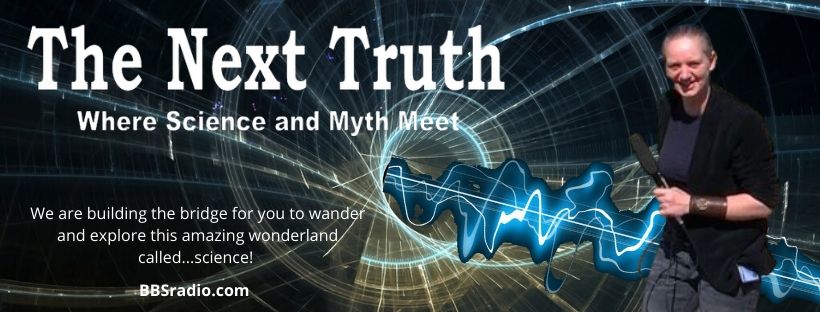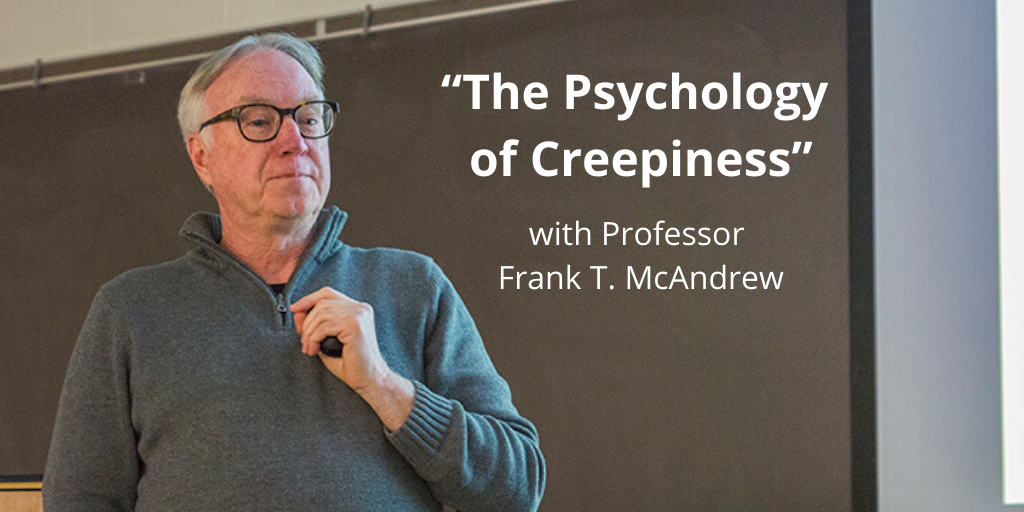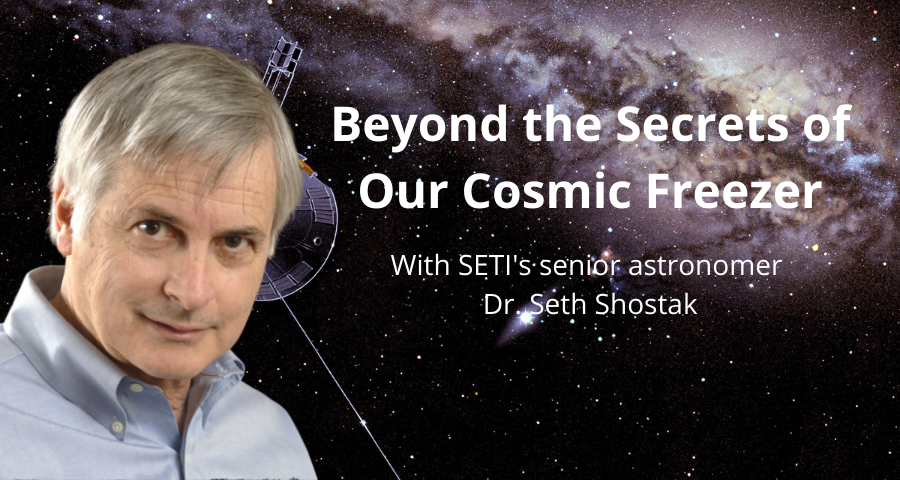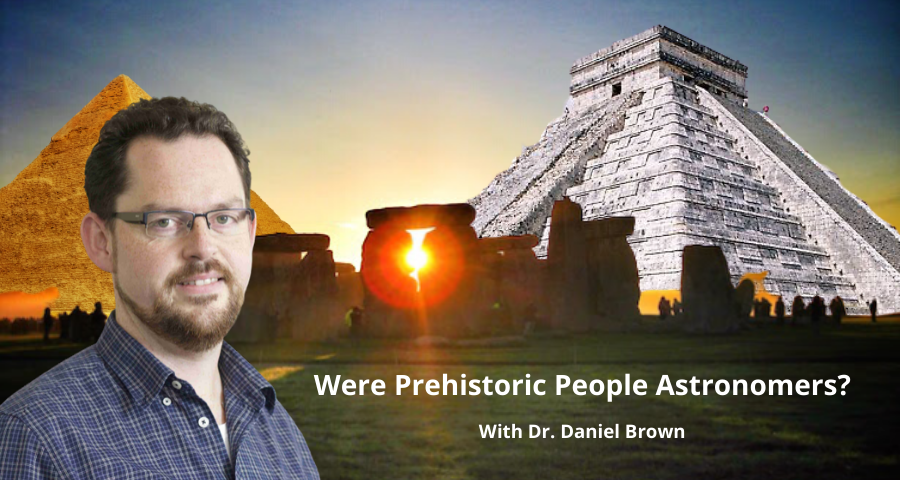A Dyson Sphere; Why Would Anyone Construct Such a Bizarre Monstrosity?
By Maria Anna van Driel, www.nexttruth.com
Are you a holographic projection build up from Dirac (bi) spinors in an ancient matrix or are you consisting from…um, real atoms? Well, it might very well be that, like the ancient Egyptians, supposedly, have maintained the magisterial pyramids built by previous nations, we are building, maintaining, a Dyson sphere around an already existing one built by those we have became to know as “aliens” or “extra-terrestrial life forms” existing in a pre-eminent system millions of light years remote from the planet we live on. Earth!
It was only recently that Space-X launched a large group of satellites into an orbit around the planet we live on. Many of us, including myself, have witnessed this miraculous sighting in the clear night skies. “Starlink” is this satellite constellation, constructed by Space-X to provide satellite internet access, being called. The constellation so is being said, will consist of thousands of mass-produced small satellites in low Earth orbit (LEO), working in combination with ground transceivers. Space-X also plans to sell some of the satellites for military, scientific and/or exploratory purposes. (Source: Wikipedia)
But it might be plausible that, without our direct awareness, we, as a species inhabiting this planet, are applying this form of technology to our daily existence because it is deeply connected with our future selves. Hot-wired in our human history and DNA, so to speak, while we are walking this path of civilizations that have lived our present already or…is here still.
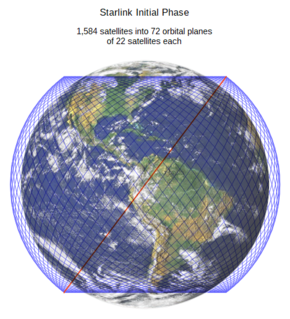
What is a Dyson sphere?
From a theoretical point of view this is being thought of as an advanced mega-engineering project that encircles a star with platforms orbiting in tight formation and is considered as the ultimate solution for living space and (infinitive) energy production, providing its creators ample surface area for habitation and the ability to capture every bit of solar radiation emanating from their central star.
“I predict that the domestication of biotechnology will dominate our lives during the next fifty years at least as much as the domestication of computers has dominated our lives during the previous fifty years.” Freeman J. Dyson, 2007.
It was in the year 1960 when the famed theoretical physicist Freeman Dyson made a radical proposal. In a single paged paper titled “Search for Artificial Stellar Sources of Infrared Radiation” he suggested that advanced extraterrestrial intelligences (ETIs) could be found by looking for signs of artificial structures so large, they encompassed entire star systems. But you only have to read the abstract to catch a whiff of the marvelous piece of inventive, but grounded speculation that unfurls in this single page article what has being published in (AAAS) Science. https://science.sciencemag.org/content/131/3414/1667
“If extraterrestrial intelligent beings exist and have reached a high level of technical development, one by-product of their energy metabolism is likely to be the large-scale conversion of starlight into far-infrared radiation. It is proposed that a search for sources of infrared radiation should accompany the recently initiated search for interstellar radio communications.”
Since then, many scientists have come up with their own ideas for possible megastructures.
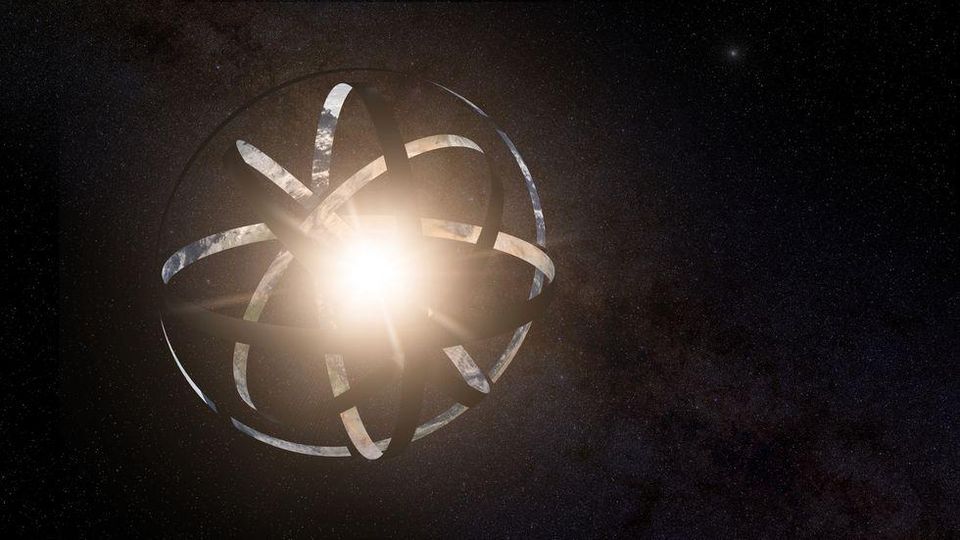
Can we build a Dyson Sphere?
With that being said, can we can say, with some caution, that we are building a Dyson Sphere what can be considered as a, for us, prototype of an advanced technology what is, in this theorem, already build and operative in a future galactic system? If a theorem as such is closer to any reality you are familiar with, it would mean that we, most likely, are trying to catch-up with our future selves by applying the latest Artificial Intelligence to our existence. A technology possessing an infinitive energy source and showing an effect in 3D photon trapping (trapping a photon inside a three-dimensional ‘prison cell’ surrounded by mirrors), realizing the photonic light to accelerate and generate its own charge what in turn generates a infinitive relativistic wave spawn from ordinary photon(s).
Through the center-of-mass energy of the system of two photons colliding two vibrating light waves, containing identical frequency which interfere with one another while traveling opposite directions along the same medium, new matter in the form of a short lived (virtual) Euclidean vector having mass but lacking kinetic energy (KE), has the prospect to arise while it is generated in an instable standing wave pattern. Let’s call this virtual Euclidean vector the ‘Axion-like particle’ or .
If a behavior as such can be realized in a chaotic system in where a gravity wave causing a perturbation around a stationary state, in which there is no velocity, it is almost a logical line of thought that this is providing the opportunity of storing, converting and projecting the information absorbed as (4D electro) holographic images which can be build up (re-build) from Dirac (bi) spinors containing the, transferred by the neutrino, primordial code what is captured and ‘brought back’ by the retracted frequency of caused by the attractive pull of its own implosion.However, the detailed nature of still remains elusive.
Phew…tough stuff!
But, when looking at, among others, the “Axion Dark Matter eXperiment” (University of Washington) or CERN’s NA64 team, who is targeted an unexplored two-dimensional area for axions and axion-like particles, not to be ruled out entirely as a possible future for us to live in.
The truth is stranger than the strangest fiction!
What the kick-off for the universe we move in was, that is indeed still a tricky question whereby multiply but plausible answers, and theories, are directing in several directions. And regardless from which angle one is viewing this question, in some enigmatic way; many end up with the mysterious behaviour of the cosmological ‘energy converters’, or a ‘universal accelerator’ as the Deutsches Elektronen-Synchrotron (DESY), Hamburg (Germany) is calling it in one of their press releases.
Anyway, there is none who can say with 100% certainty what their true purpose is; it is an almost logical line of thought that these mysterious dark areas do have a purpose. Nature has yet not to create ‘something’ what has no meaning or cannot conserve life. This seems to include both dark matter and dark energy as well.
Even though it is being said that that the Dyson’s Sphere’s were suggested as a way of giving scientists engaged in the search for Extra-Terrestrial Intelligence something to look for, there could be this quite logical and simple explanation for the reality and existence of these Dyson spheres. The famous equation of Einstein E=mc2 seems to be indeed the secret of the stars but the question in this is…which star and what are its coordinates?
The president and co-founder of INTERSTELLARS, Mrs. Chiara Chiesa is aiming her focus on inspiring girls and women to pursue STEM and space careers.
Mrs. Chiara Chiesa who is an International Public Relation expert and Space Technology Commercialization Transfer advisor and recently has being selected as mentor, female model and ambassador for the Space4Woman Network of the United Nations for Space Affairs. UNOOSA United Office for Outer Space Affairs.
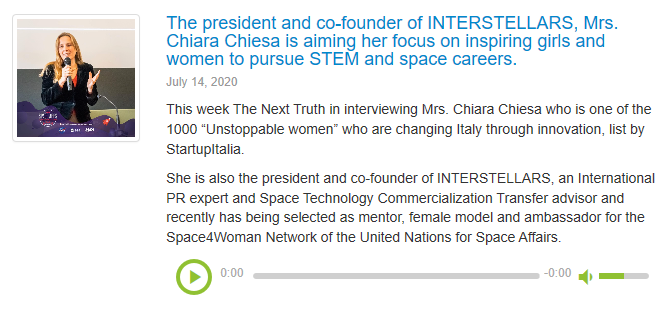
https://thenexttruth.podbean.com/mf/play/0ezsku/Podcast_Chiara_Chiesa_b2kxx.mp3
I think is was about 3 weeks ago that a friend of mine from the scientific community mailed me a highly interesting link what directed me to Chiara’s LinkedIn post what read that she is one of the 27 women, chosen between space professionals and space industry leaders from all over the world, who will engage in popular activities and, with personal stories, aim to inspire and mentoring girls and women to study STEM subjects and access the space sector.
And if that is not impressive enough, she is also the president and co-founder of INTERSTELLARS and fond of new technologies, sales advisor for Graphene-xt and PR and advisor for Walle mobility, which is a taxy-drone startup.
Chiara is one of the 1000 “Unstoppable women” who are changing Italy through innovation, list by StartupItalia and aims her focus on inspiring girls and women to pursue STEM and space careers.
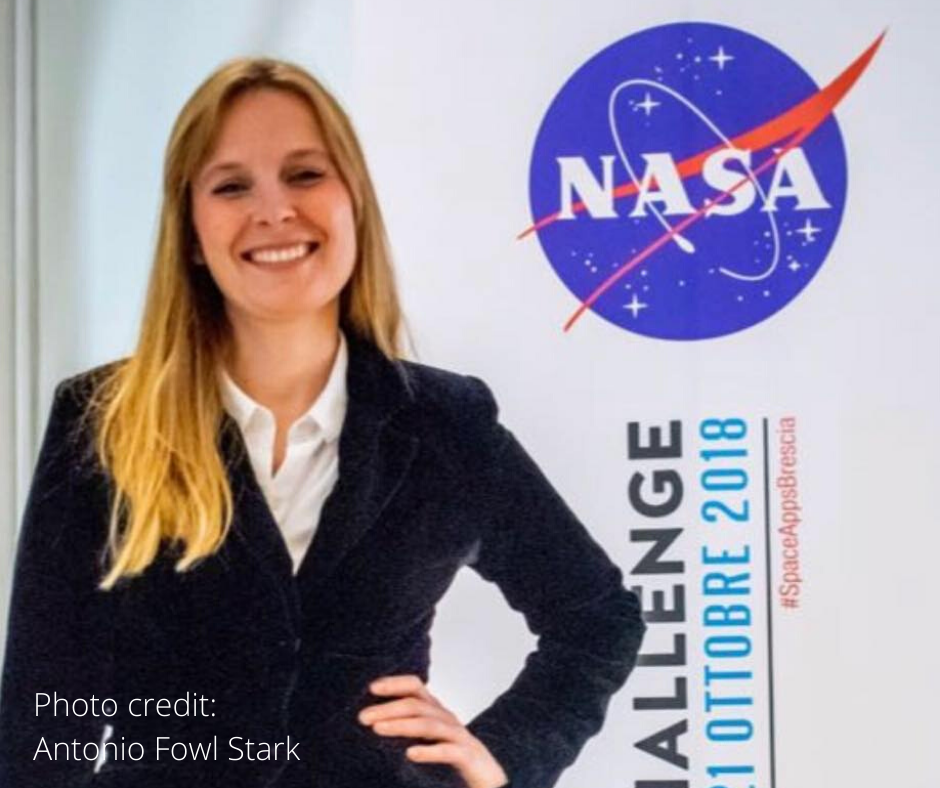
This Months Edition of “Young People Science” is FREE for You to Download
Have you ever wondered how your brain is reacting when you eat too much sugar…why mountain climbers have chocolate in their backpacks or how cotton candy is being made?
The Next Truth: Young People Science has research these, and more, fun questions for you to wrap your mind around and to become smarter than you teachers.
But wait! This month you don’t have ask your parents…you can download the FREE PDF via the website and read all about “The Science of Candy”
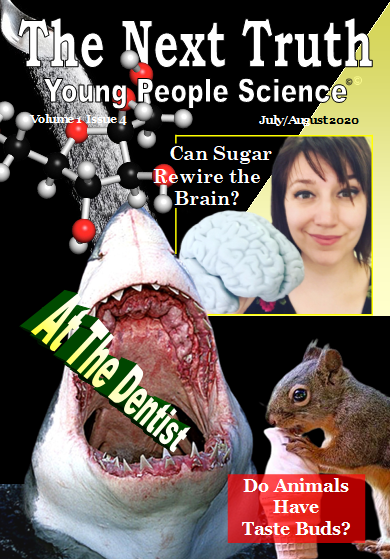
https://www.magcloud.com/browse/magazine/1512517
* Questions you have been walking around with for years? The Next Truth provides an answer! Email your questions to; info@nexttruth.com

The very first podcast of “The Next Truth; Where Science and Myth Meet”
“Paranormal Underground; The Backbone of The Next Truth”
With the founders and owners of PUG, Cheryl Knight-Wilson & Chad Wilson
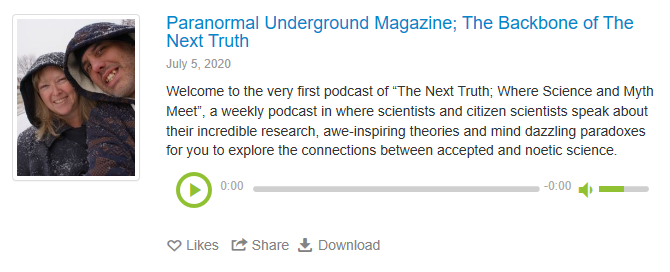
Welcome to the very first podcast of “The Next Truth; Where Science and Myth Meet”, a weekly podcast in where scientists and citizen scientists speak about their incredible research with you to explore these awe-inspiring theories, mind dazzling paradoxes, the connections between accepted and noetic science and…everything in between.
I’m your host Maria Anna van Driel and this week I have the privilege to speak with Cheryl Knight-Wilson and Chad Wilson who are the founders and owners of Paranormal Underground magazine.
Not only are Cheryl and Chad’s magazine and podcasts your connection to the paranormal world as they are covering a wide variety of topics that are beyond the scope of normal scientific understanding… they are also the backbone of The Next Truth! Without their support, courage and energy… The Next Truth would never been born in the first place.
PUG is available on paranormalunderground.net (PDF-on-demand), magcloud.com (print-on-demand), and issuu.com (read online for free).
[Top]The Next Truth Has Gained a New Look
It was October 2018 that The Next Truth launched her very first magazine. Since then many of you have became familiar with the magazines look. This has slightly changed as both magazines of The Next Truth has gained a NEW LOOK.
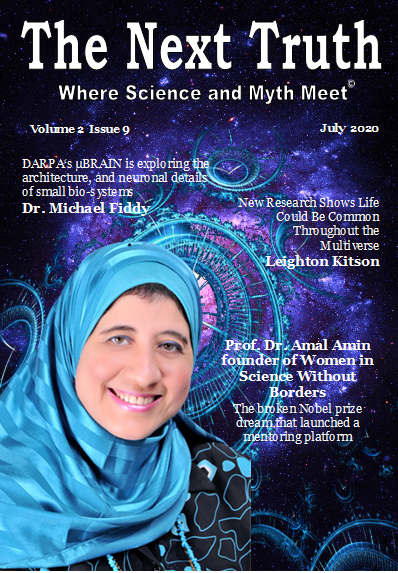
These new layouts are not be withheld from you and can now be downloaded as a free PDF.

The Next Truth is not coming back with new editions containing fasinating articles, we are also going to present with you a weekly podcast in where renowned scientists and citizen scientists speak about their incredible research, awe-inspiring theories and mind dazzling paradoxes for you to explore the connections between accepted and noetic science.
So, fasten your galactic seatbelts and stay tuned as our guests will amaze you with their new research conducted what will let you balance on the edge of your chair for sure!
- Questions you have been walking around with for years? The Next Truth provides an answer! Email your questions to; info@nexttruth.com
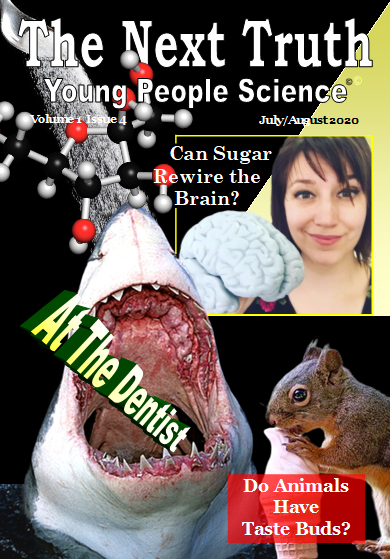
The Importance of Girls and Women to Pursue STEM and Space Careers
In one of my FB posts I have mentioned that The Next Truth was leaving the door ajar concerning the gained the opportunity to go ON-AIR. Well, a few days back the first requests were send out what has started the process of recording and editing some of the very first Skype interviews.
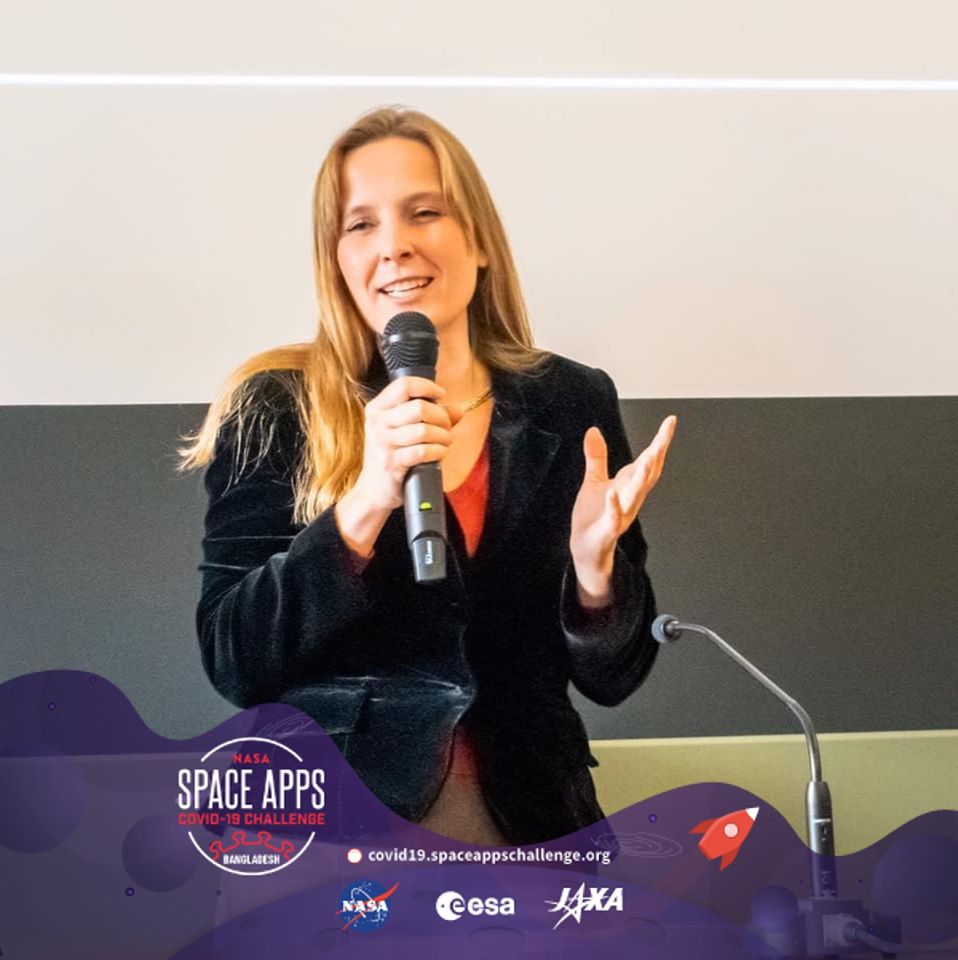
Yesterday The Next Truth had the privilege to speak with Mrs. Chiara Chiesa who is an International Public Relation expert and Space Technology Commercialization Transfer advisor and recently has being selected as mentor, female model and ambassador for the Space4Woman Network of the United Nations for Space Affairs. UNOOSA United Office for Outer Space Affairs.
It was about 3 weeks ago that a friend of mine from the scientific community mailed me a highly interesting link what directed me to Chiara’s LinkedIn post what read that she is one of the 27 women, chosen between space professionals and space industry leaders from all over the world, who will engage in popular activities and, with personal stories, aim to inspire and mentoring girls and women to study STEM subjects and access the space sector.
And if that is not impressive enough, she is also the president and co-founder of INTERSTELLARS and fond of new technologies, sales advisor for Graphene-xt and PR and advisor for Walle mobility, which is a taxy-drone startup.
Chiara is one of the 1000 “Unstoppable women” who are changing Italy through innovation, list by StartupItalia and aims her focus on inspiring girls and women to pursue STEM and space careers.
* Stay tuned for the precise date of the first podcast to be broadcasted.
Young People Science May/June 2020 Issue – Out Now!
Learn From Experts and Out-Smart Your Parents and Teacher!
Finally! Your personal scientific magazine is online and you can ask your parents, or teacher, for you to purchase the 3th edition of Young People Science via MagCloud as a digital version or as a print version and show everyone the incredible cool stuff you have learned.
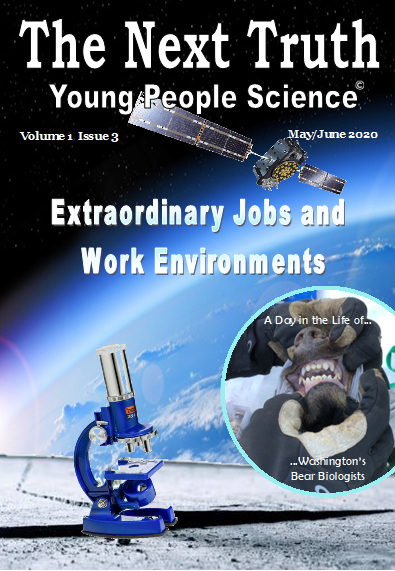
Young People Science has spoken with some super duper cool and friendly scientists and asked them to explain their field of work to you. Join these scientists as they explain through in-depth articles how satellites work, why people believe in creepy ghosts and take you on an adventures trip while tracking wild bears and study their behaviour.
But besides learning all about the exiting places scientists work in, you can also take a super fun Space Quiz with your friends, test you intelligence by solving cross word puzzles, read about what it’s like to be a fighter pilot and read about how the CIA have goofy doves working for them as…SPIES!
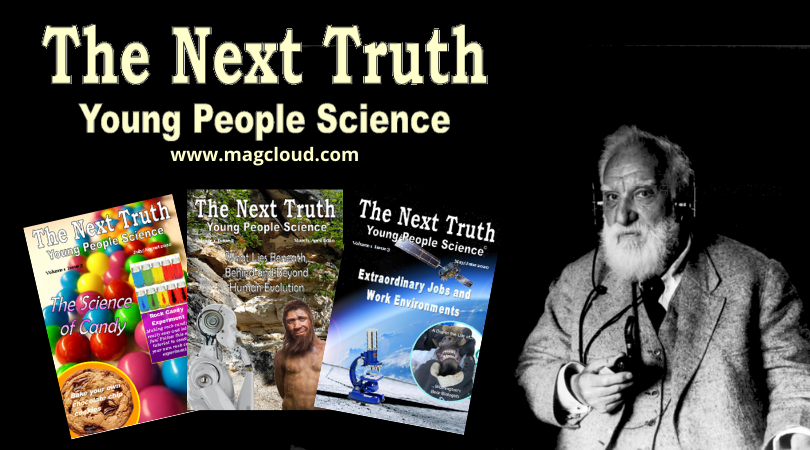
I hope you will enjoy this edition of Young People Science which is created just for you. And remember, science = fun!
For more cool scientific stuff follow us via Face Book and/or click on the link, hit the ‘LIKE’ button or…the ‘FOLLOW’ button as hard as you can and never miss an issue of “The Next Truth: Young People Science” https://www.magcloud.com/browse/magazine/1512517
[Top]Post-Traumatic Growth; Can We Embrace New Possibilities?
By Maria Anna van Driel

…as soon as you have kick-started the chariot.
As they say, trauma is a vivid nightmare that comes while we are in this state of being ‘awake’. Not only is it, for a myriad of people, difficult to overcome the psychological bruises which are accompanied with trauma, it also takes tremendous perseverance and resilience to overcome this invisible battle that is taking place day-in and day-out.
Not knowing how to cope with it, you knock on the door of a professional psychologist or psychiatrist who will then let you run into a new wall by telling you to act as a stereo-type victim as well as that you have to replenish your medicine cabinet and…they have the best recipes for you to suppress any nasty thought and/or spooky dream, which will wake you up screaming, you are about to experience in the future.
There is no doubt that, for some people, medication is a true working remedy but, as we all know, we are all unique individuals meaning, everyone has their own way in responding to a traumatic event. Even though Cliniclowns are doing incredible and important work, a professional psychologist and/or psychiatrist does not have to dress-up and/or act as such all the time but is seems that the above mentioned psychologist and psychiatrist have forgotten that positivity and laughter, for instance, do have a deeper and longer effect in losing certain tensions whereby this suffering suddenly has a transformative power.
We have all hear about stress and its inevitability, yet succumb to the displeasure when it strikes us. While resilience may help to withstand the pain to some extent, PTGO allows us to grasp the knowledge of using the pain to change our lives for the better.
When we think about it for a moment, it is remarkable to see that the brain is, somehow, capable of ‘choosing’ such a vivid form of processing the stress that is accompanied with PTSD. In this it would be an almost logical line of thought that this reality is as real as the sandwich you are eating during lunch…right?
This made me curious about PTGO. I read many articles concerning PTSD and PTGO during the last weeks and even had the privilege to speak with several Neuro-Psychologists and (clinical) Psychologists via Skype. The pro’s and con’s of medical and spiritual healing processes were indeed interesting topics to discuss as well as trauma being the main cause for a foggy/altered reality.
However, be in religion, poetry, philosophy, or literature, the general understanding of how pain can be beneficial is not a new concept altogether. The scientific field of positive psychology has embraced this process of thriving and calls it Post-Traumatic Growth Order (PTGO) better known as the self-improvement one undergoes after experiencing life challenges.
The idea of Post Traumatic Growth Order is a popular one and describes how survivors of traumatic events cannot only heal from their trauma, but may actually grow into a stronger, more driven, and more resilient person because of their trauma.
With evidence-backed examples, the astonishing and eye-opening articles of experts, which can be read in this month’s issue of The Next Truth, will delve a little deeper than what we have known so far about trauma. They will help you in understanding the essentials of PTGO, how to weather it and how to apply this in our lives.
[Top]The Psychological Impact of Corona virus Disease (COVID-19) Outbreak
Behavioral expert and Psychologist Professor Wändi Bruine de Bruin Weighs In
By Maria Anna van Driel, www.nexttruth.com

It was inevitable! The threat of the corona virus pandemic has gripped the world population. The ongoing pandemic of COVID-19 was, according to Wikipedia, first identified in Wuhan, Hubei, China, in December 2019, and was recognized as a pandemic by the World Health Organization on 11 March 2020. As of 24 March, more than 414,000 cases of COVID-19 have been reported in more than 190 countries and territories, resulting in more than 18,500 deaths and more than 108,000 recoveries. But besides the clinical picture of COVID-19 and the myriad news broadcasts spreading an avalanche of information on how to reduce the process of becoming sick and how to prevent the virus spreading, there is also a psychological effect. An effect what is most likely finds its source in the isolation that has imposed on people and will remain visible for a longer period after COVID-19 is so abundantly present in our lives.
How do people perceive the risks of this novel threat? What are the psychological effects of the isolation we are experiencing? To gain both a deeper insight in these questions and a clearer view on the latest research developments of today’s pandemic I reached out to an expert on public behavior during risky times and decision-making from the Netherland, Prof. Wändi Bruine de Bruin, PhD.
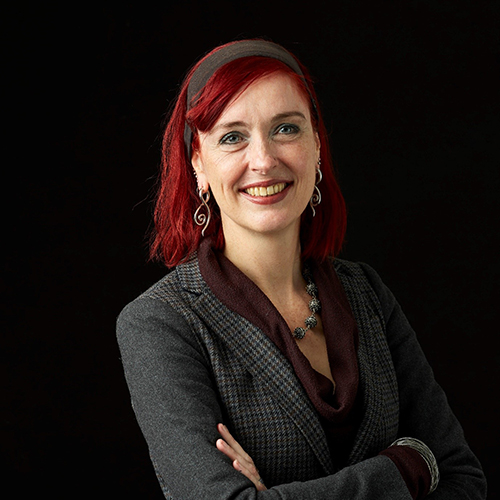
Prof. Bruine de Bruin moved to USC from the University of Leeds (United Kingdom), where she directed the Center for Decision Research and held a Leadership Chair in Behavioral Decision Making. In January 2020 she imitated the new position of “Provost Professor of Public Policy, Psychology, and Behavioral Science” at the University of Southern California (USC) where her research aims to understand and inform how, across the life span, people make decisions about their health, their well-being, and their environmental impacts.
‘At USC, Prof. Bruine de Bruin explains, Provost Professors are appointed by the Provost in recognition of their contribution to multiple academic disciplines.’ ‘It feels great to get this recognition and that interdisciplinary research is valued so much at the University of Southern California. In my view, important societal problems cannot be resolved by looking at them through the narrow lens of just one academic discipline.’
Together with her colleagues at the USC, she is conducting a national US longitudinal survey to track people’s risk perceptions of and experiences with COVID-19, as well as economic and mental health consequences. But when Prof. Bruine de Bruin started her career, applied and interdisciplinary research was often frowned upon – because it was thought to not make sufficient theoretical contributions. In this she disagrees, given that insights from other disciplines can help improve on theories and methods for testing theories.
‘Needless to say, my first semester at USC did not turn out the way I had anticipated’, Prof. Bruine de Bruin adds. ‘Fortunately, my USC colleagues are also wonderful to work with over Skype, Zoom, phone, and email.’
Nowadays she has published over 100 peer-reviewed papers on these topics, in journals targeting psychology, public policy, health, and environmental science. She is a member of the editorial boards of the Journal of Experimental Psychology:Applied, the Journal of Behavioral Decision Making, Decision, Medical Decision Making, the Journal of Risk Research, and Psychology and Aging.
‘We have come a long way in showing that interdisciplinary research can lead to new insights – with both practical and theoretical implications’, Prof Bruin de Bruin states proudly.
To become more familiar with the work of Prof. Wändi Bruine de Bruin you can visit the Website of the University of Southern California, https://priceschool.usc.edu/people/wandi-bruine-de-bruin/
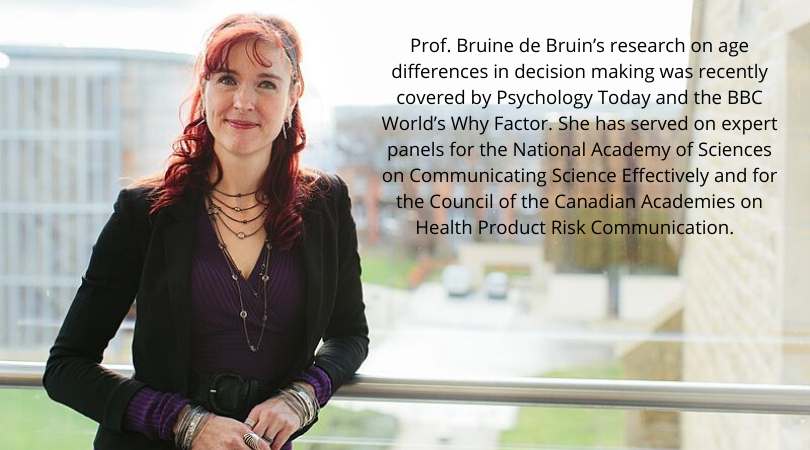
Welcome Professor Bruine de Bruin. I appreciate the time you are taking for letting us peer into your career as a provost Professor of public policy, psychology, and behavioral science and your psychological view on this frightening topic of COVID-19.
Q: Can you tell the readers of The Next Truth a little bit about yourself? Who is Professor Wändi Bruine de Bruin?
Prof. Bruine de Bruin: I grew up on a flower farm in the Netherlands, and was the first in my family to attend university. I received a BSc in psychology and an MSc in cognitive psychology from the Free University in Amsterdam. My family wasn’t sure how to feel about my chosen path, but that changed when I got into the PhD program in Behavioral Decision Research at Carnegie Mellon University in the United States.
Q: What inspired you to step into the science of psychology and behavioral science?
Prof. Bruine de Bruin: I originally wanted to be a therapist, so I went to the Free University in Amsterdam to study clinical psychology. However, the initial classes I was taking on that topic did not involve a lot of discussion of the evidence base for their approaches. I was much more attracted to the psychology of judgment and decision making, which was taught as part of cognitive psychology, and offered a more rigorous approach for identifying potential problems, developing interventions, and testing their effectiveness. Although a lot of the research in that field focused on studying decision problems in the lab, with undergraduate students as participants, I thought it had great promise for understanding and informing people’s decisions about real-world issues, such as those related to their health, finances, and environmental impacts.
Q: I spoke briefly to your colleague Professor Baruch Fischhoff and he made me extremely curious about the origin of your surname. Would you reveal to our readers what the peculiarity and history is of your surname?
Prof. Bruine de Bruin: My mother spent some time tracking our family history and it turns out that our last name is a mistake. “De Bruin” is a common last name in the Netherlands and it means Brown. At some point in my family history, someone added “Bruine” (which also means brown) to indicate the first name of their father. A lot of people think that our name indicates some kind of fancy heritage, but it was simply a mistake. My family has existed of farmers or farm hands for many generations.
My name is unique, but hard to spell. Even my co-authors have a hard time getting it right. I often get mis-cited as de Bruin, WB or with several other variations.
Q: If I understood correctly, you are originally from the Netherlands. How did you come to work as a collaborating professor at Carnegie Mellon University?
Prof. Bruine de Bruin: Gideon Keren supervised my masters thesis and he strongly encouraged me to apply to the PhD program at Carnegie Mellon University. I had never been to the United States, and wasn’t so sure that I wanted to live there. But I loved the idea of working with Baruch Fischhoff, whom I had cited heavily in my masters thesis. I got in, and have been working with Baruch ever since. (And I liked living in the United States much more than I thought I would. I lived in Pittsburgh for a total of 16 years, and live in Los Angeles now, after 7 years in Leeds, United Kingdom. I am still a collaborating professor at Carnegie Mellon today, although my main affiliation is now as Provost Professor at the University of Southern California.)
Q: The world has undergone a lock-down so to speak. What do you think will be the psychological and economical effect(s) of this global isolation?
Prof. Bruine de Bruin: In the baseline survey of our national longitudinal COVID-19 survey that we conducted in March 2020, when COVID-19 was starting to spread in the United States, we were already seeing the initial mental health consequences. Participants were reporting elevated levels of anxiety and depression, which are likely to worsen over time, as the health and financial consequences worsen.

Q: Are you in a quarantine area yourself? If so, how limited are your social activities at the moment and how do you experience this isolation?
Prof, Bruin de Bruin: My husband and I only recently moved to Los Angeles. I started my new job at USC in January of 2020. We were hardly settled in when the stay at home order went into effect in California. We had not even gotten around to buying a car yet – not that we need it now.
I have been working from home since March 10. I started earlier than was required by USC or the state of California, because I had been taking the bus to work, and it seemed wise to avoid public transportation.
Although I am not a pandemic flu expert, I had served on two expert panels on pandemic flu in 2005-2006, to contribute expertise in psychology and behavioral science. I had learned a lot about pandemic flu and non-pharmacological interventions such as social distancing.
We still go out for walks in our neighborhood, where the streets are quiet and it is easy to maintain a safe distance from others. Because we only just moved here from England, we very much enjoy the weather and the beautiful gardens in our neighborhood. I think those walks are keeping me sane. And, even though it may sound strange, all the work associated with the COVID-19 survey is also helping to keep my mind off worries about COVID-19.
Q: According to the website of World Health Organization; “Older people and those with underlying medical problems like cardiovascular disease, diabetes, chronic respiratory disease, and cancer are more likely to develop serious illness.” Which impact has information as such on the decisions people make?
Prof. Bruine de Bruin: In our initial survey that we conducted in March 2020, we are not yet seeing a lot of differences between older vs. younger people, and people with vs. without diabetes, in terms of their tendency to step up their hand-washing and social distancing. I think that at that time, people were still unsure about how serious it was, and what to do.
We did find that older adult age was associated with reporting better mental health, despite older adults recognizing the greater case-fatality rate for their age group. This finding is in line with other research in the psychology of aging, which suggests that older adults experience less negative emotions, have better emotion regulation, and are less responsive to stressors.
It is possible that these findings will change as the epidemic continues, and people who are older and those with serious health conditions are disproportionally affected. I expect that our first follow-up survey will show more responsiveness to the information that has been released, in regards to greater risk perceptions and anxiety, and even more implementation of protective behaviors. We will also be examining how people with serious health conditions are faring.
Q: Racism or xenophobia seems to rise in people’s minds as soon as social media hints in the direction of a possible origin of a flu outbreak. It was only recently that the world was in a panic mode about Ebola, which originated in Africa. How do you think that a previous shock as such plays into how people are reacting today on the threat of the COVID-19?
Prof. Bruine de Bruin: Our survey had questions about discrimination and unfair treatment associated with COVID-19. In our initial analysis of data collected between March 10-16, we found that 14 percent of Asians and 10 percent of non-Hispanic blacks had such experiences, as opposed to 4 percent of non-Hispanic whites, 6 percent of Hispanics and 6 percent of people in other racial and ethnic groups.
Q: Professor Bruine de Bruin, thank you so much for this interview. Do you have any additional advice you can give on how people can manage their anxiety around this novel virus?
Prof. Bruine de Bruin: A lot of people are feeling increased anxiety, which is normal under these circumstances. Some helpful suggestions from the field of psychology for reducing anxiety:
- Focus on the things you can control
- Limit exposure to anxiety-provoking news sources
- Do slow breathing exercises
- Be kind to yourself and don’t beat yourself up for being stressed and distracted
- Take care of your health
- Stick to a daily routine
- Connect with others (via the phone, Skype, or zoom)
- Seek professional help (via phone or telehealth) if your anxiety is too hard to deal with
For additional suggestions, please see the CDC website: https://www.cdc.gov/coronavirus/2019-ncov/daily-life-coping/managing-stress-anxiety.html
[Top]
